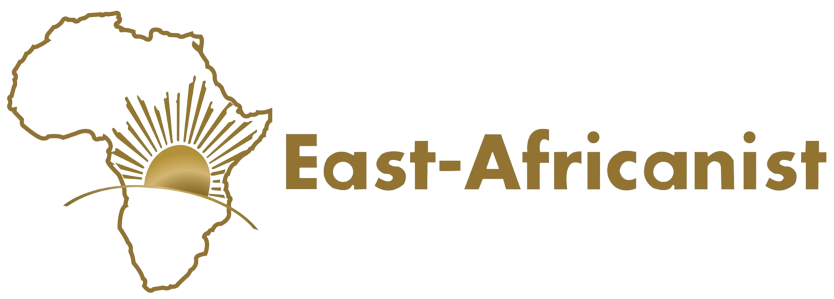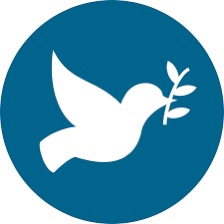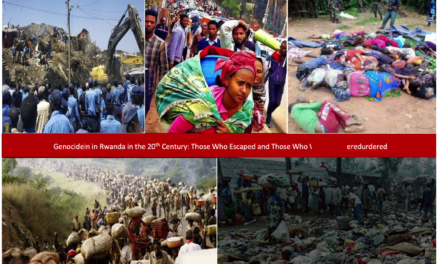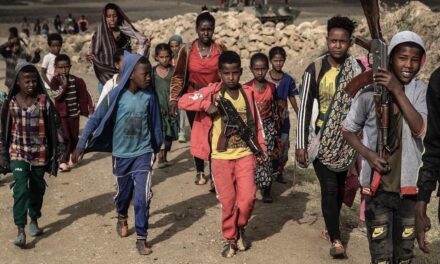By: Fisseha Yacob Belay (Ph.D.)
For the last 15 months, Ethiopia has been grappling with one of the worst and bloodiest conflicts in its history. Following the attack on the Northern Command on November 4, 2021 that triggered the recent conflict, hundreds of thousands of lives have been lost, millions have been displaced, and billions of dollars’ worth of resources have been destroyed. Despite the ongoing assault of Tigray People’s Liberation Front (TPLF) in Afar and Amhara regions, the federal government seems to be determined to end this bitter conflict via peaceful negotiation.
It is imperative that all parties should come to the negotiation table in good faith to end the ongoing debacle. Currently, the Government of Ethiopia (GoE) has committed to resolving it through a dialogue for peace; however, the TPLF has continued to manipulate the process and to inflict further insurmountable damages to civilians and properties in Amhara and Afar regions.
In recent months and weeks, the GoE has also announced its quest towards National Dialogue to bring lasting peace in Ethiopia. A committee of 11 people from diverse sociopolitical, religious, and ethnic backgrounds has been selected to lead the national dialogue with a mandate to resolve the deeply seated challenges to move the country forward. Their monumental tasks require them to identify and rectify the multitude of challenges that would pave a major way for lasting peace in the country. In this regard some of their major tasks are to understand the scope, scale, complexities, and challenges of sustainable peacebuilding process. Thus, it is critical that this committee as well as the GoE takes into consideration the multiple aspects required to foster lasting peacebuilding at local, regional, and national levels.
Sustainable Peacebuilding
Sustainable peacebuilding is the process of fostering harmonious social relations by reducing, preventing, or transforming destructive conflict and violence. It strives to address the root causes of structural violence, multiple forms of injustices and oppressions. Sustainable peacebuilding can only be materialized by dismantling violent structures within the social fabric and reconstructing a culture of peace (Galtung, 2004; Galtung & Fischer, 2013).
Central to building sustainable peace is primarily transforming the social, economic, political, and historical injustices and promote social justice and human rights within a given social structure (Shaw 2001). It should also be noted that this processrequires an ongoing rigorous and collective effort from the government and public and private stakeholders to succeed.
In addition, sustainable peacebuilding requires the establishment of multidimensional institutions that promote culture of peace while deterring culture of violence. To this end, functional institutions, agencies, and organizations that champion and promote human rights and social justice play significant roles in fostering and sustaining peace. Therefore, establishing institutions that facilitate collaborative relationships at local, regional, and national levels is critical.
Building sustainable peace requires us to understand violence and its multidimensional ramifications in the social structure. Furthermore, implementing functional conflict resolution strategies is integral parts of a sustainable peace building process.
Violence is an intrusive behavior that inflicts physical or psychological damages to the target individual or groups. Reychler (2001) sees violence as a condition whereby the life expectancy of the target is intentionally reduced. This highlights the devastating ramifications of violence on the victims including injury, death, and intergenerational trauma. In addition, it should be noted that destructive violence can lead to social crisis and irrecoverable damages to people, properties, and the environments.
Violence
To attain sustainable peace, one needs to understand the and transform the physical, psychological, structural, and cultural forms of violence (Harris, 2002).
Physical violence refers to the use of coercive force to cause a physical harm, damage or kill an individual or groups. It is widely argued that physical violence is the most common and visible type of violence. War and genocide are the two main extreme examples of violence that cause significant destruction to human lives, properties, and the environment. Thus, it should be clearly noted that without the termination of the ongoing violence in Ethiopia the National Dialogue’s effort to build sustainable peace cannot be achieved.
Psychological violence is another type of violence primarily intended to harm the mental and psychological state of human being. Unlike physical violence, this form of violence is less visible and indirectly damages the personal sense of worth. Similarly, the ongoing conflict in Ethiopia has resulted in devastating trauma, emotional distress, and psychological crisis on millions of victims. It should be clear that without tackling the magnitude of the psychological violence and trauma, fostering sustainable peace is impossible.
Structural violence is one of the most potent and powerful form of violence built into the social structure (Galtung, 1996). It is less visible and systemically denies individuals, communities, and groups from accessing social, economic, and fundamental human rights and dignity. Structural violence perpetuates oppressions and maintains social hierarchies and inequalities while exposing the most marginalized communities for further exploitations.
Similarly, structural violence is the root of the ongoing crisis in Ethiopia. To understand the full picture of the current crisis, it is important to fully understand the historical, contextual, sociopolitical, and cultural dynamics of Ethiopia. It is evident that the current debacle stems from the self-proclaimed apartheid constitution that segregate the diverse Ethiopian people along ethnolinguistic lines. The use of ethnic identity as a marker of governance, economic, education, and social policies resulted in disastrous outcome benefiting the few elites while exploiting and impoverishing the bulk of the society. It should be clearly noted that sustainable peace can only be materialized by transforming these policies and governance structures that perpetuate structural violence. Without challenging and addressing the constitution, the bedrock of the ongoing crisis in Ethiopia, building sustainable peace is impossible.
A culture of violence promotes and sustains structural violence(Galtung & Fischer, 2013). In other words, it perpetuates the use of coercive power to dominate, subjugate and inflict pain and suffering on the opponent parties. Similarly, in Ethiopia the culture of deploying dysfunctional conflict management strategies resulted in protracted war, sufferings, and pains of civilians. Contrary to this, a sustainable peacebuilding process requires the transformation of culture of violence to culture of peace. Thus, understanding and addressing the insurmountable amount of physical, psychological, structural, and cultural violence in Ethiopia is central for building sustainable peace.
Sustainable Peace Requires the Transformation of Oppression
Building sustainable peace requires the transformation of oppression and its oppressive structures.
Ethiopia’s Achilles heel for the last three decades is the ethnic federalism policy, which is an inherently oppressive structure incapable of transforming itself and oppression.
Central to the foundation of this policy is the systemic use of identity markers to divide and rule the diverse Ethiopian people. The fruit it bears are violence, subjugations, repression, and dehumanization. As a result, the structure does not allow for transformation to precipitate. Within this violent and oppressive structure, sustainable peace will never be possible.
Sustainable peace in Ethiopia can only be materialized by transforming the structure including the current constitution that is predicated upon, oppression, division, and segregation of the diverse people of Ethiopia along ethnolinguistic lines. In taking these difficult, challenging, and bold steps, the country can stage the platform for sustainable peace to flourish.
Sustainable Peace Requires Reconciliation and Healing
Reconciliation is the process of restoring, mending, and healing from traumatic aggression and violence. Reconciliation does not mean to forget the pains, sufferings, and abuses; rather, it is a step towards healing from the physical, phycological, emotional wounds and violence. Genuine reconciliation requires us to acknowledge and validate the complex and multiple forms of abuse and painful experiences of the victims. In doing so, victims and perpetrators can restore the broken relationships and facilitate harmonious coexistence.
Collective healing from years of violence and abuse is integral for building sustainable peace. In this regard, direct and indirect violence induced grievances, abuse, pains, intergenerational traumas, and sufferings must be reconciled genuinely to move forward. The attainment of sustainable peace requires the transformations of these deeply seated grievances that victims have endured for a very longer period. In doing so, Ethiopia would break the cycle of violence and can attain sustainable peace.
Unaddressed Grievances are Ticking TimeBombs
One needs to understand that unresolved grievances and traumatic experiences can easily relapse and default to the vicious cycle of violence. It can also cause devastating consequences within the social structures. Due to years of violence, terrors, and atrocities, hundreds of thousands of Ethiopian people have suffered from physical, emotional, and psychological abuses and grievances.
In addition, these brutalities, abuse, and displacements have created profound resentment and deep-seated grievances towards the ruling parties and its accomplices.
Thus, acknowledging, validating, and resolving these grievances and injustices of the victims are major milestones towards healing and securing lasting peace in Ethiopia. To that end, a genuine reconciliation process is pivotal.
Collective Healing in the Vertical and Horizontal Reconciliation Process
Healing and transforming trauma incurred from the multiple violence is fundamental for building sustainable peace in Ethiopia.
Vertical and horizontal reconciliation process can have a positive impact on the peace building quest. Vertical reconciliation refers to the reconciliatory process between the government entities (local, regional, and federal) and the victims (individuals and groups who are the victims of government perpetrated violence). Government inflicted challenges and abuse against individuals or groups must be revealed and addressed properly.
Local, regional, municipal, and federal government leaders must take responsibilities and reconcile with victims. In doing so, the ruptured and lost trust among the people and the government body would be restored and healthy relationships can be fostered.
Horizontal reconciliation intends to bring people from diverse communities and ethnoreligious groups to restore their relationship, reconcile and heal collectively. Years of ethnic and religious based conflicts have damaged relationship and created major strife among communities in different parts of Ethiopia. Thus, conducting horizontal reconciliation is pivotal for lasting and sustainable peace.
Looking Ahead
Sustainable peace requires the transformation of conflict using functional resolution strategies. In this respect, functional conflict resolution strategy addresses conflict in a healthy manner while maintaining positive relationship. On the other hand, dysfunctional conflict strategy deals with conflict in unhealthy while damaging relationships among different parties.
For far too long in Ethiopia, we have been utilizing dysfunctional conflict management strategies to deal with conflicts. We commonly apply coercive power in a dysfunctional manner to deal with conflict which leads to further damages to our relationships (at personal, communal, and societal levels) and maintains the vicious cycle of violence. It should also be noted that a dysfunctional conflict resolution strategy is not capable of addressing the root causes of destructive violence. Rather, it nurtures trauma, destruction, and negative relationships among parties. Contrary to this, functional conflict resolution strategy plays pivotal role in breaking the cycle of violence (past and present) and fosters culture of peace moving forward. As such, understanding, developing, and utilizing functional conflict strategy is critical in building sustainable peace.
In this regard, the implementation of transitional and restorative justice systems to heal, restore and move forward. One of the major ways to do this difficult task would be is to genuinely initiate the reconciliation and healing process at multiple levels. I do believe that for Ethiopian people must move forward, to do that however, we need to heal. To heal, we need multidimensional reconciliation i.e., historical, political, military, economic, and others. It should be noted that these aspects are beyond the scope of this short note and an exhaustive analysis is needed in these matters.
For instance, for decades, our social political and historical discourses have encountered major polarization of history and historical analysis. Ethiopia’s DNA based political discourse that has been at the centre for the last three decades has polarized national history and created irreconcilable disparities among the society. It is critical that historians, community leaders and stakeholders find amicable way of reconciling our history and move forward. It must be noted that elite consensus in a fragmented country like Ethiopia plays central role for building sustainable and lasting peace. It should also be noted that these steps are not exhaustive but can provide a precursor to look ahead and start our journey to achieve sustainable peace.
Recommendations
Actionable strategic ways of sustainable peacebuilding arecritical. To that end, the implementation of the following items simultaneously or sequentially is critical.
1. Ending and transforming the ongoing violent conflict by any means necessary. Of course, non-violent methods to solve the conflict would be an ideal: however, given the nature of TPLF leaders, it would hardly be possible to only use non-violent method to end the conflict. In any case, the government of Ethiopia must find ways to apply functional conflict management strategy to culminate the ongoing violent war and move towards reconciliation.
2. Disarming and deploying rebellious forces, rehabilitating victims and displaced communities that are impacted by the violent conflict is essential.
3. Restoring broken relationships and trust among communities /societies using diverse mechanisms.
4. Rebuilding governance structures and vital development infrastructure including schools, universities, health facilities, roads, bridges, and homes for victims will bring normalcy to war torn communities. It also boosts public trust and confidence in the process. In addition, restoring the justice system to uphold the rule of law and deter potential reoccurrence of violence that could be threatening the peacebuilding process is essential.
5. Conducting an impact assessment. On going strategic impact assessment and documentation is critical to identify the magnitude of the violence on civilians, properties, and the environment. In this regard, a careful, systemic, and thorough investigation needs to be conducted understand the magnitude of physical, emotional, and psychosocial damages to victims. In this regard, strategic planning and implementation to restore sustainable peace is critical.
6. Building the capacities of institutions that promote the rule of law, justice, education, human rights, civil society and advocacy and support networks at grassroot levels (capacity building of major sectors i.e., government, private, community).
7. Building strong allyship with external forces, including international organizations, countries, and other stakeholders who could support sustainable peace building process in knowledge, training, finance, and other means.
Finally, we need to realize that somehow, we must find ways to be brave, bold, forgiving, heal, break the cycle of violence, and move forward collectively. Otherwise, the vicious violent cycle we inflict on one another will consume all of us.
Reference
Galtung, J. (1996). Peace by peaceful means: Peace and conflict, development and civilization (Vol. 14). Sage.
Galtung, J., & Fischer, D. (2013). Violence: Direct, Structural and Cultural. In: Johan Galtung. SpringerBriefs on Pioneers in Science and Practice, vol 5. Springer, Berlin, Heidelberg. https://doi.org/10.1007/978-3-642-32481-9_3
Harris, I. M. (2004). Peace education theory, Journal of Peace Education, 1:1, 5-20, DOI: 10.1080/1740020032000178276
Parsons, K. A. (2007) Structural Violence and Power, Peace Review, 19:2, 173-181, DOI: 10.1080/10402650701353612
Shaw, C. (2001). Reychler, Luc and Thania Paffenholz, eds. Peacebuilding: A Field Guide. Boulder, CO: Lynne Rienner, 2001.
The author can be reached at: [email protected] and you may follow him on Twitter: @fishata.






Dear Dr.Fisseha,
I wholeheartedly appreciated your efforts that you went through to contribute your part as citizen and scholar of Ethiopia to ensure peace by employing sustainble peace building processes.
The way the article framed the sources of violence in to four categories (physical,psychological,structural & cultural ) is highly appreciated,and it is invaluable article for current plan of National Peace Building Dialogue as to be led,coordinated and chaied by elected Commission (consitituting 11 Commissioners).The way the article depicted the root causes for deep rooted and generational violence in Ethiopia from different perspectives is a nice insight to look for respective workable and functional remedies or solutions to ensure sunstainable peace building process of Ethiopia.
As reccommendations:
Under structural violence-various perspectives such as history,reliohion,social,ethnograpy …are clearly stated,which is very critical.However,the understanding and owning violence,wrong nartatives and distortion of history across generation is missed.Because,generational blamings for wrong narrations and distortion of history is a great challenge and source for loose of Unity in Ethiopia ,and blames shifting currently.Once the root gaps of understanding for current and recurrent violence across generation is identified,planning for remedies for sustainable peace building processe accordingly will be possible.
For Cultural violence – as stated in the article,horizontal reconciliation and healing play a pivotal role.In addition,as Ethiopia is very rich in cultural and indigenous knowledge on conflicts management approaches across various ethinic groups and culture,giving due attention to figure out and employing such existing indigenous knowldeges is imperative as well.
As the article precisely put,challenging and addressing deep rooted structural violence through transformative strategies and approaches plus in a participatory way is the best process to ensure sustainable peace building in Ethiopia.Outlawong the dyfunctional peace resolution strategies and time being remedies- ጊዜያዊ መስተገሽ ) should also be a great emphasis.
In sum,the article is very timely and invaluable for current National peace building dialogue processes which is expected to be led by elected commission in the country.
Kassahun Belay,
Thank you !!